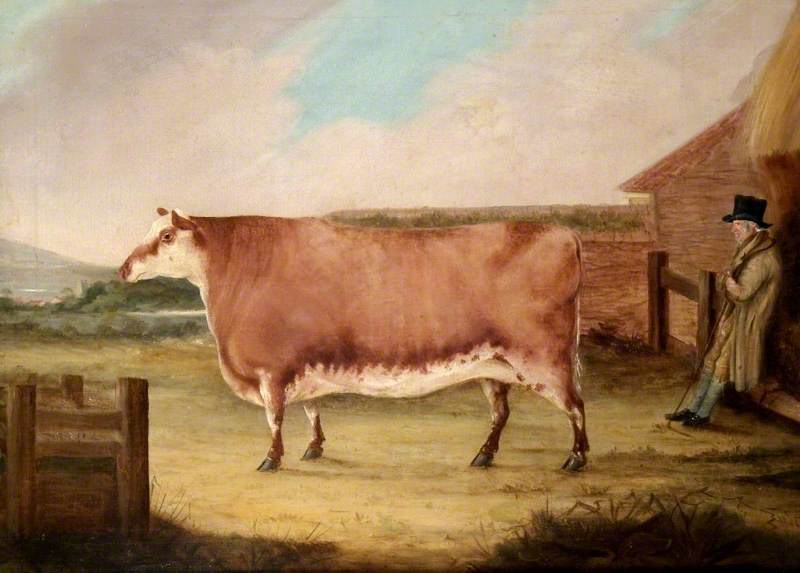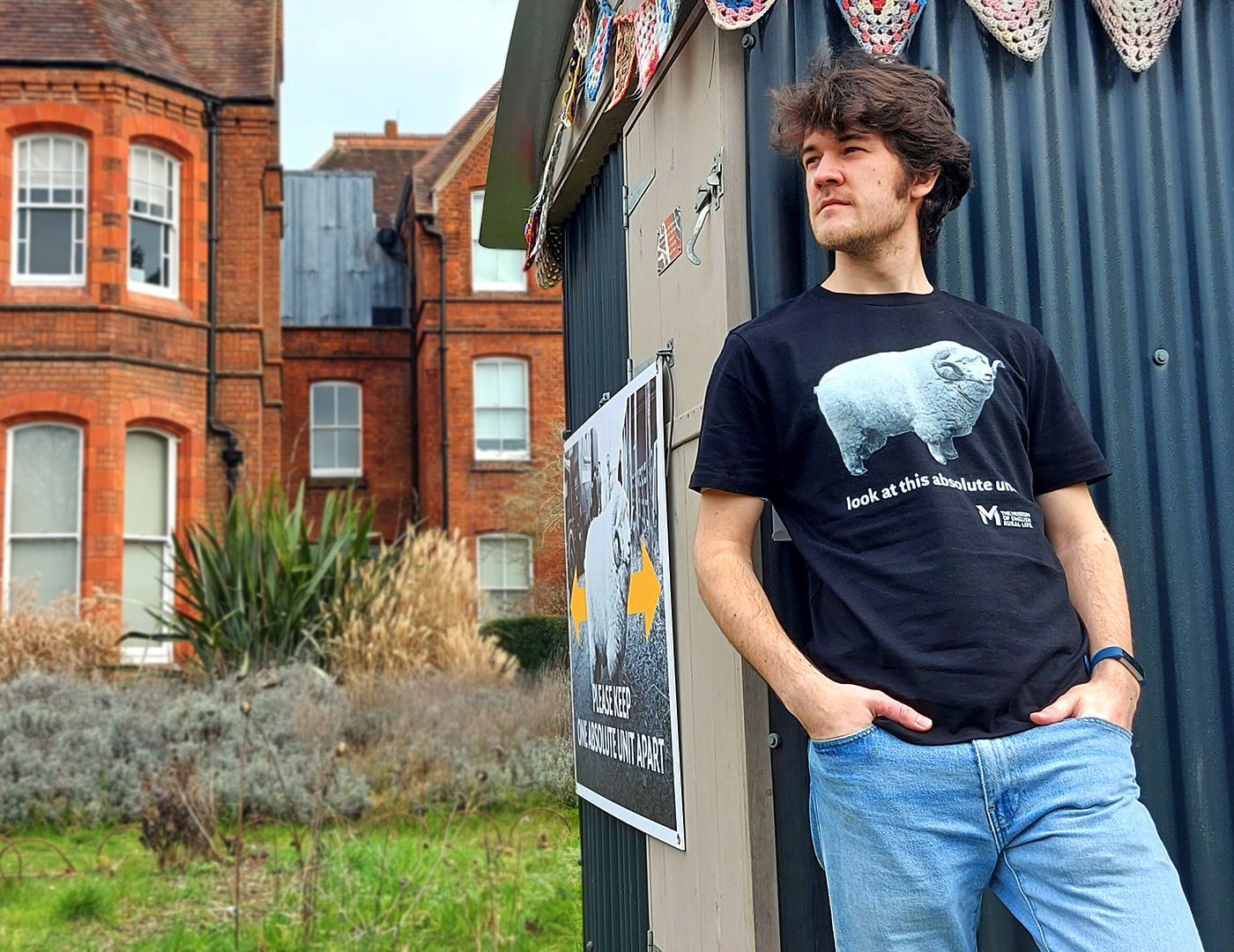The history behind an absolute unit
Written by Dr Ollie Douglas, Curator of MERL Collections
Intrigued by the photo of the‘absolute unit’ that’s been doing the rounds on social media? Why was this ram such a unit? Why is livestock so often large and… well, stocky? And why does the Museum of English Rural Life have massive numbers of photos, prints and paintings of enormous farm animals?

Why was the ram in the photo such a unit?
Firstly, its an Exmoor Horn ram, meaning its a breeding male from a hardy type of sheep designed to cope with hill environments. This breed was intended for meat and wool production, which meant it had to pack a bit of meaty muscle and sport a fulsome fleece. In other words, it was the full package or, as our social media folks put it so eloquently, ‘an absolute unit’. This particular ram was born into a pedigree flock. It was then selected by an Exmoor Horn expert (the uncle of the original breeder), George Thorne. He would have been looking for a chosen few male lambs to raise into breeding rams. The unlucky majority would be destined for castration and to be sold on as fat-stock lambs. Our absolute unit clearly showed the desired attributes of this particular breed from an early age. If you want to know more about the qualities that George would have been looking for then check out the Exmoor Horn Sheep Breeder’s Society (http://www.exmoorhornbreeders.co.uk/breedqualities.htm).
2024 update: absolute unit merch
You asked, and we delivered. Buy exclusive absolute unit merch from our official online shop. International delivery available on all orders.
Why is livestock so often large and stocky?
Size and a solid build were considered key attributes by the folks who designed our modern farm breeds. Essentially, these farming pioneers of the 18th and 19th centuries took local and ancient breeds and crossed and selectively bred them to favour particular features. This meant they chose specimens good at producing milk, examples that appeared to be hardy and healthy, and in this way began to design animals to suit particular climates, landscapes, and production aims. At its heart though there was a great deal of guesswork involved and in many cases it was a simple story of super-sizing for maximum profit. If you do pop to the cinema to watch Peter Rabbit, look at the fizzy drinks and popcorn and its the same idea at work. A bigger box of popcorn and a larger drink can be sold for more money and, broadly speaking, breeders thought the same was true for farm animals. In other words, the bigger the unit, the larger the fleece and the meatier the carcass.

Why does the Museum have all these images of enormous farm animals?
When you’ve bred an impressive animal such as our absolute unit, how do you celebrate? As well as treating yourself to time off and a visit to your friendly local museum, you probably want to show off how good you are. So, you enter the animal in a show and allow it to compete against other animals. Before the advent of photography in the mid-19th century you might have commissioned an artist to paint your prize beast but by the mid 20th century you’d expect the farming press to snap a shot of it for the next exciting installment of Farmer and Stockbreeder. That way, instead of having to pop into town to watch the latest blockbuster you can simply stay at home and enjoy a striking image of an enormous animal on your own wall or flick through a publication with a photograph of an absolute unit that you helped to create.

If you are still intrigued and want to find out more, we’ve got lots of livestock portraits on display in the Museum. They sit alongside a copy of the world’s only boardgame dedicated to the artificial insemination of dairy cattle and an ‘artificial bee inseminator’ (incidentally, this is mentioned in the cartoon about the development of livestock breeds but almost certainly doesn’t feature in Peter Rabbit). You are also very welcome to come and browse our amazing library and use our Reading Room to delve into our extensive photographic archives, absolute unit included.
5 thoughts on “The history behind an absolute unit”
Leave a Reply
You must be logged in to post a comment.


thank you for some really enlightening stuff about why that ram is such a unit.
You forgot to say that when the only record of a prize animal was a commissioned painting of it the size & other good breed points were deliberately exaggerated to impress onlookers
A B S O L U T E U N I T